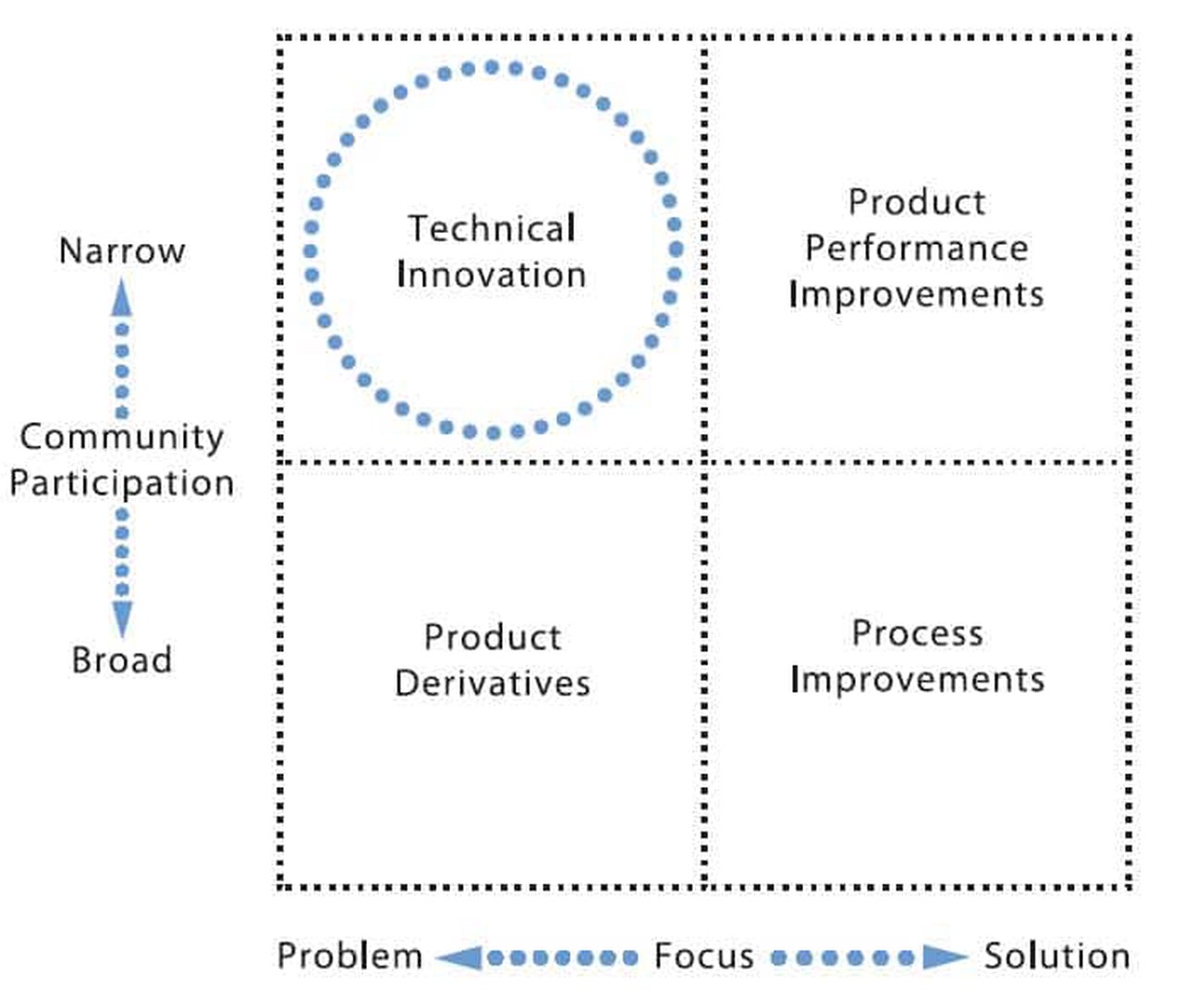Social Community Matrix: Getting the Most Out of Social Communities
We see many of our clients using virtual communities to communicate and collaborate with customers, suppliers, or other partners. They find that social solutions can accelerate innovation and product development. Managed communities enable the best resources to share ideas, collaborate, and present the best proposals to the leadership team. The Social Community Matrix is a tool that helps you select the best type of community for your needs, whether you are setting up an internal community (only employees) or an external community as well.
Benefits of the Social Community Matrix
- Allows you to quickly define the right type of community to create, based on a problem
- Enables globally dispersed organizations to gather collective intelligence from their teams
- Accelerates product development by increasing focus on the most important issues

Social communities have two basic organizing principles: focus and participation. These principles represent the X and Y axes of the matrix, where focus is the X axis (horizontal) and participation is the Y axis (vertical).
Focus
Focus refers to the objective of the community. You can use the community in an open-ended way to help set the direction for your company with the input of community members. If the questions are of this nature, then we call the community problem-focused.
Examples of problem-focused questions:
- What should be our primary product development focus for the next year?
- What technology do we need to work on today to support our technology roadmap?
You can also use the community to derive specific solutions to an articulated problem. This type of community is solution based.
Examples of solution based questions:
- How do we increase product performance by 30%?
- How do we reduce product cost by 10%?
Participation
Participation refers to identifying the right community members. A basic measure of participation is the degree to which it is open to those outside the organization, often called an external community.
Social communities need not be open to anyone with an opinion. It is best to select members with the most informed opinions to participate in the community. This is a critical success factor in leveraging the data that comes from the community.
How to Create a Social Community Matrix
- Clearly define the desired outcome of the community (problem-focused vs. solution based)
- Determine the appropriate scope of participation (internal vs. external, narrow vs. broad)
- Identify on the Social Community Matrix the type of community you should create to optimize your results
Which Business Problems Does the Tool Solve?
Social communities have become an increasingly fertile means of keeping yourself ahead of the competition and ensuring that teams are working as efficiently as possible.
Few companies have the luxury of everyone sitting around the same conference room table to discuss issues and implement solutions. Collaboration via social communities has become increasingly necessary to ensure that companies are capturing their best ideas, working efficiently, and driving better decisions faster.
What Else You Should Know
The Social Community Matrix is a high-level framework. You need to apply judgment when determining the right participants. Experts or vocal authorities should be emphasized.
Social communities need to be vibrant to be effective. The best way to keep them vibrant is to:
- Have important, unique content available there
- Carefully consider your topics for discussion
- Act on recommendations
Finally, you need to manage your social communities. It is not enough to send out an email announcing the community and hope your members go there.
It’s important to assign someone as a manager to oversee the communities and keep them engaged. This requires someone who is willing to make this their top priority and has at least 25% of their time available for tending social communities.
